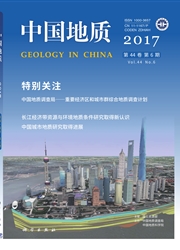

 中文摘要:
中文摘要:
对南蒙古戈壁天山地区哈拉莫里特锡钨矿强烈云英岩化花岗岩的锆石SHRIMP U-Pb定年分析,得到其侵位年龄为(214±3) Ma,表明该锡钨矿形成于早中生代三叠纪。结合已有资料的综合分析,提出中国北山地区存在2期钨锡成矿事件,即晚古生代泥盆纪和早中生代三叠纪。蒙古戈壁天山地区哈拉莫里特钨锡矿成矿时间与北山地区第二期钨锡成矿事件发生的时间相一致。根据构造演化与成矿作用时、空演化的耦合关系,提出中国北山与蒙古戈壁天山地区发育的2期钨锡成矿作用均形成于碰撞-碰撞后的构造背景,其中前者与敦煌地块和北山地块在早古生代末的碰撞事件有关,而后者则可能与古亚洲洋的最后闭合的造山作用有关。
 英文摘要:
英文摘要:
SHRIMP U-Pb data of zircons from the strongly greisenized granite at the Khar Morit W-Sn ore deposit in Gobi Tianshan of South Mongolia shows that the emplacement age of granite intrusion is (214 ± 3) Ma, which indicates that the W-Sn mineralization of the deposit took place during Triassic in Early Mesozoic. According to the comprehensive analysis of the data avialable, the authors hold that two episodes of W-Sn mineralization existed in Beishan area of China: one in Devonian and the other in Triassic. The metallogenic time of the Khar Morit W-Sn deposit in Mongolia’s Gobi Tianshan is coeval with that of the second W-Sn ore-forming event in Beishan, China. The spatial-temporal relationships between the tectonic evolution and the W-Sn mineralization suggest that the W-Sn ore deposits produced during the two metallogenic episodes all occurred in a collision to post-collision setting. The Devonian W-Sn ore deposits were related to the collisional event between the Dunhuang and Beishan blocks, which took place during Late Silurian-Early Devonian period, whereas the Triassic ones were likely related to the orogeny brought about by the final closure of the Paleo-Asian Ocean at about the end of Late Paleozoic.
 同期刊论文项目
同期刊论文项目
 同项目期刊论文
同项目期刊论文
 期刊信息
期刊信息
